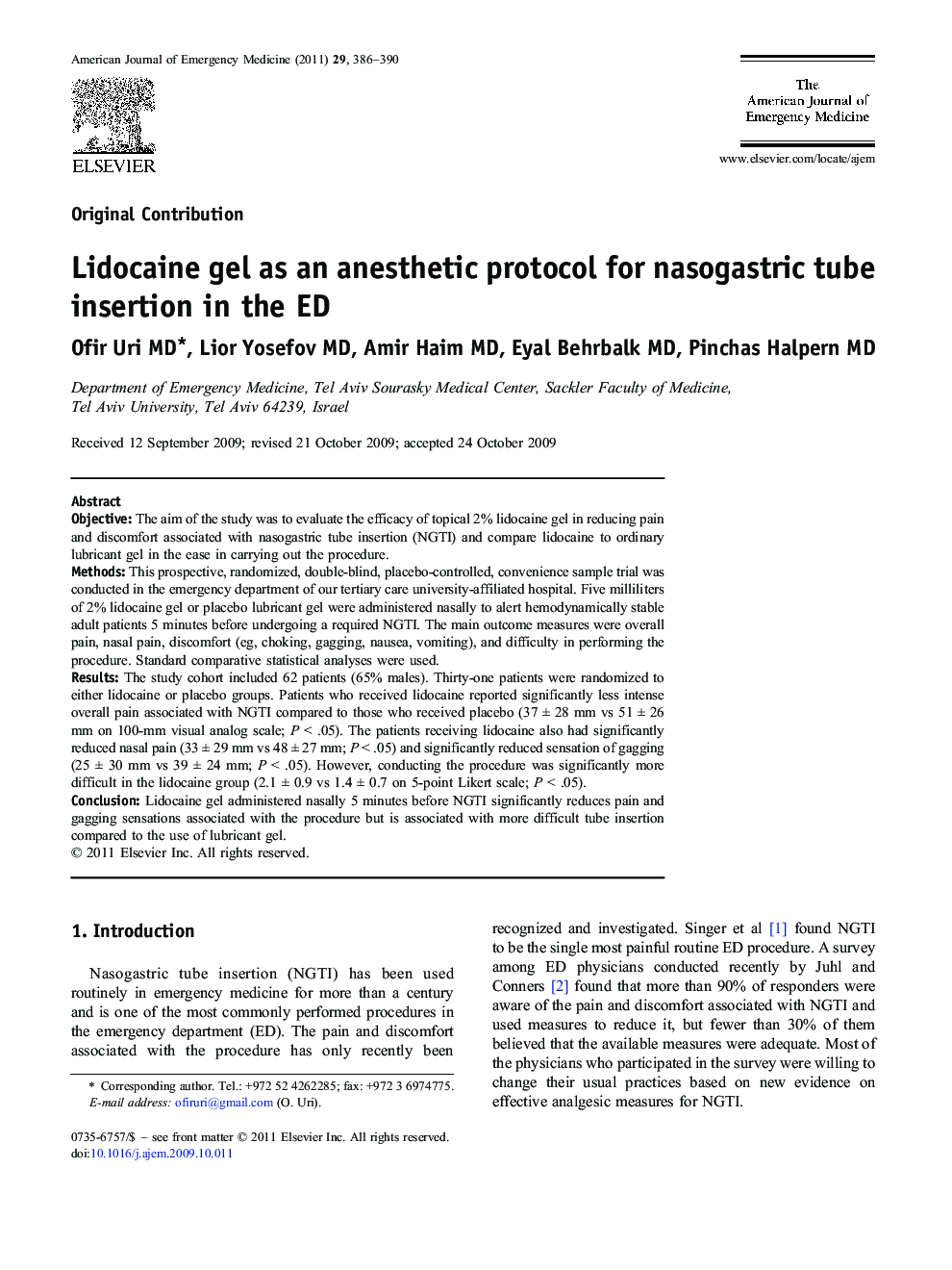| کد مقاله | کد نشریه | سال انتشار | مقاله انگلیسی | نسخه تمام متن |
|---|---|---|---|---|
| 3226280 | 1588149 | 2011 | 5 صفحه PDF | دانلود رایگان |

ObjectiveThe aim of the study was to evaluate the efficacy of topical 2% lidocaine gel in reducing pain and discomfort associated with nasogastric tube insertion (NGTI) and compare lidocaine to ordinary lubricant gel in the ease in carrying out the procedure.MethodsThis prospective, randomized, double-blind, placebo-controlled, convenience sample trial was conducted in the emergency department of our tertiary care university-affiliated hospital. Five milliliters of 2% lidocaine gel or placebo lubricant gel were administered nasally to alert hemodynamically stable adult patients 5 minutes before undergoing a required NGTI. The main outcome measures were overall pain, nasal pain, discomfort (eg, choking, gagging, nausea, vomiting), and difficulty in performing the procedure. Standard comparative statistical analyses were used.ResultsThe study cohort included 62 patients (65% males). Thirty-one patients were randomized to either lidocaine or placebo groups. Patients who received lidocaine reported significantly less intense overall pain associated with NGTI compared to those who received placebo (37 ± 28 mm vs 51 ± 26 mm on 100-mm visual analog scale; P < .05). The patients receiving lidocaine also had significantly reduced nasal pain (33 ± 29 mm vs 48 ± 27 mm; P < .05) and significantly reduced sensation of gagging (25 ± 30 mm vs 39 ± 24 mm; P < .05). However, conducting the procedure was significantly more difficult in the lidocaine group (2.1 ± 0.9 vs 1.4 ± 0.7 on 5-point Likert scale; P < .05).ConclusionLidocaine gel administered nasally 5 minutes before NGTI significantly reduces pain and gagging sensations associated with the procedure but is associated with more difficult tube insertion compared to the use of lubricant gel.
Journal: The American Journal of Emergency Medicine - Volume 29, Issue 4, May 2011, Pages 386–390